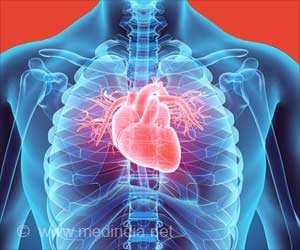A new American study has suggested new ways to improve heart treatment. The study, led by University of Iowa scientists, demonstrated in theory, that it might be possible to
A new American study has suggested new ways to improve heart treatment.
The study, led by University of Iowa scientists, demonstrated in theory, that it might be possible to use drugs that maintain the positive effects on heart function of a known enzyme called calmodulin kinase II (CaM kinase) while reducing its negative effects.Mark E. Anderson, professor and head of internal medicine at the University of Iowa Roy J. and Lucille A. Carver College of Medicine, said: "CaM kinase helps regulate calcium, which is essential to heart function, but CaM kinase's calcium connection also can play a role in electrical problems that lead to irregular heart beats and cell death. This new finding suggests a specific way to keep the wanted CaM kinase effects but at the same time eliminate the bad effects.
"Most patients with heart failure are at risk of sudden death. Figuring out how and why heart failure happens is a major goal for academic medicine."
CaM kinase adds phosphate groups to other proteins, a process known as phosphorylation. This process can activate proteins and set in motion or sustain cell activity.
Anderson, who also is a member of the University of Iowa Heart and Vascular Center, said: "The study showed, surprisingly, the importance of CaM kinase's effect on two particular amino acid targets among the thousands of amino acids that make up protein targets for phosphorylation by CaM kinase. Controlling these targets might prevent the 'ripple effect' of other molecular events that result in arrhythmia and cell death."
For the study, researchers used rabbit heart cells, which behave much like human heart cells, and demonstrated that if CaM kinase is prevented from interacting with a protein that regulates calcium channels, negative effects, including cell death, do not occur. In particular, they showed it was possible to either block the specific site on the protein where CaM kinase binds or block the ability of CaM kinase to perform phosphorylation on the protein.
Advertisement
Anderson said: "CaM kinase is needed to maintain calcium channel function, which allows the heart to contract. But too much CaM kinase, and consequently too much calcium entry into heart cells, causes electrical instability and other downstream molecular problems that can lead to cell overload and cell death, which causes heart failure."
Advertisement
Source-ANI
SAV









